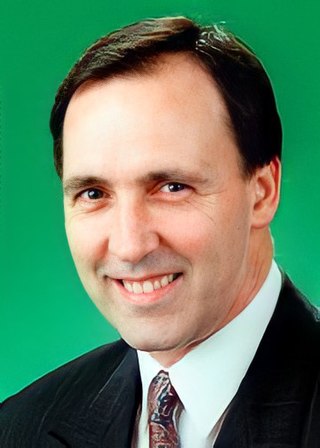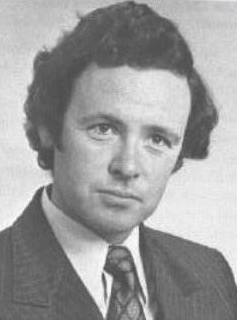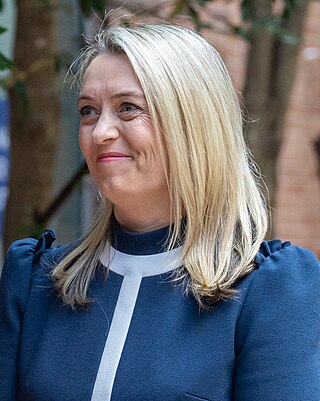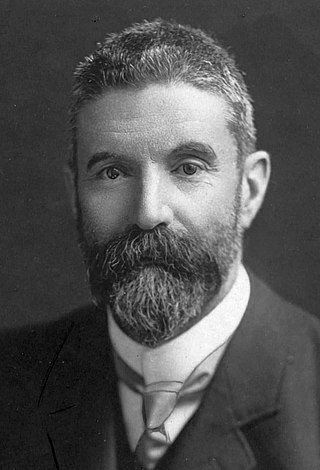
Robert James Lee Hawke was an Australian politician and trade unionist who served as the 23rd prime minister of Australia from 1983 to 1991. He held office as the leader of the Australian Labor Party (ALP), having previously served as the president of the Australian Council of Trade Unions from 1969 to 1980 and president of the Labor Party national executive from 1973 to 1978.

John Malcolm Fraser was an Australian politician who served as the 22nd prime minister of Australia from 1975 to 1983. He held office as the leader of the Liberal Party of Australia.

Paul John Keating is an Australian former politician who served as the 24th prime minister of Australia from 1991 to 1996, holding office as the leader of the Australian Labor Party (ALP). He previously served as the treasurer of Australia in the Hawke government from 1983 to 1991 and as the seventh deputy prime minister of Australia from 1990 to 1991.

The prime minister of Australia is the head of government of the Commonwealth of Australia. The prime minister chairs the Cabinet and thus heads the federal executive government. Under the principles of responsible government, the prime minister is both a member and responsible to Parliament. The current prime minister is Anthony Albanese of the Australian Labor Party, who assumed the office on 23 May 2022.
The Chief of Staff to the Prime Minister is the top official in Canada's Prime Minister's Office (PMO). The position was created in 1987 to head the PMO.
In Canada, the principal secretary is a senior aide, often the most senior political aide, to a head of government. Formerly, the position of principal secretary was the most senior one in the Canadian prime minister's office (PMO). However, since 1987, it has been second to the chief of staff position.

Ralph Willis AO is an Australian former politician who served as a Cabinet Minister during the entirety of the Hawke-Keating government from 1983 to 1996, most notably as Treasurer of Australia from 1993 to 1996 and briefly in 1991. He also served as Minister for Industrial Relations, Minister for Transport and Communications and Minister for Finance. He represented the Victorian seat of Gellibrand in the House of Representatives from 1972 to 1998.

The Department of Foreign Affairs and Trade (DFAT) is the department of the Australian federal government responsible for foreign policy and relations, international aid, consular services and trade and investment. Australia's total official development assistance (ODA) decreased in 2022 due to differences in Australia's financial year reporting and the timing of its COVID-19-related expenditure, representing 0.19% of gross national income (GNI).
A private secretary (PS) is a civil servant in a governmental department or ministry, responsible to a secretary of state or minister; or a public servant in a royal household, responsible to a member of the royal family.
The following lists events that happened during 1990 in Australia.
A Kirribilli agreement, in Australian politics, is an agreement, typically confidential, between a leader and their deputy for the handing over of power on the satisfaction of an agreed precondition.

The Office of the Prime Minister (commonly called the prime minister's office or PMO comprises the staff that supports the prime minister of Canada and is located in the Office of the Prime Minister and Privy Council Building in Ottawa, Ontario. The PMO provides policy advice, information gathering, communications, planning, and strategizing. It should not be confused with the Privy Council Office, which is the higher office that controls the Public Service of Canada and is expressly non-partisan; the PMO is concerned with making policy, whereas the PCO is concerned with executing the policy decisions made by the government.

The spouse of the prime minister of Australia is generally a high-profile individual who assists the Australian prime minister with ceremonial duties as well as performing various other functions. The position is known as the partner of the prime minister of Australia when the prime minister is unmarried but is in a relationship.

Several surveys of academics and the general public have been conducted to evaluate and rank the performance of the prime ministers of Australia.

The Hawke government was the federal executive government of Australia led by Prime Minister Bob Hawke of the Australian Labor Party (ALP) from 1983 to 1991. The government followed the Liberal-National Coalition Fraser government and was succeeded by another Labor administration, the Keating government, led by Paul Keating after an internal party leadership challenge in 1991. Keating was Treasurer through much of Hawke's term as prime minister and the period is sometimes termed the Hawke-Keating government.

The Keating government was the federal executive government of Australia led by Prime Minister Paul Keating of the Australian Labor Party from 1991 to 1996. The government followed on from the Hawke government after Paul Keating replaced Bob Hawke as Labor leader in an internal party leadership challenge in 1991. Together, these two governments are often collectively described as the Hawke-Keating government. The Keating government was defeated in the 1996 federal election and was succeeded by the John Howard's Coalition government.

Cabinet Secretary is a ministerial portfolio within the Australian federal government. It has existed in three periods, from 2007 to 2013, from 2015 to 2017, and since 2022. The minister is responsible for assisting the Prime Minister of Australia in managing the day-to-day procedural and operational matters of the Cabinet and any Cabinet committees. The Cabinet Secretary's portfolio falls within the Department of the Prime Minister and Cabinet.
The Chief of Staff to the Prime Minister of Australia is the principal adviser and head of the Prime Minister's Office. The position of Chief of Staff to the Prime Minister of Australia was formally created by Prime Minister Gough Whitlam in 1972 to run the political and private office of the Prime Minister.
This page details numerous records and characteristics of individuals who have held the office of Prime Minister of Australia.









